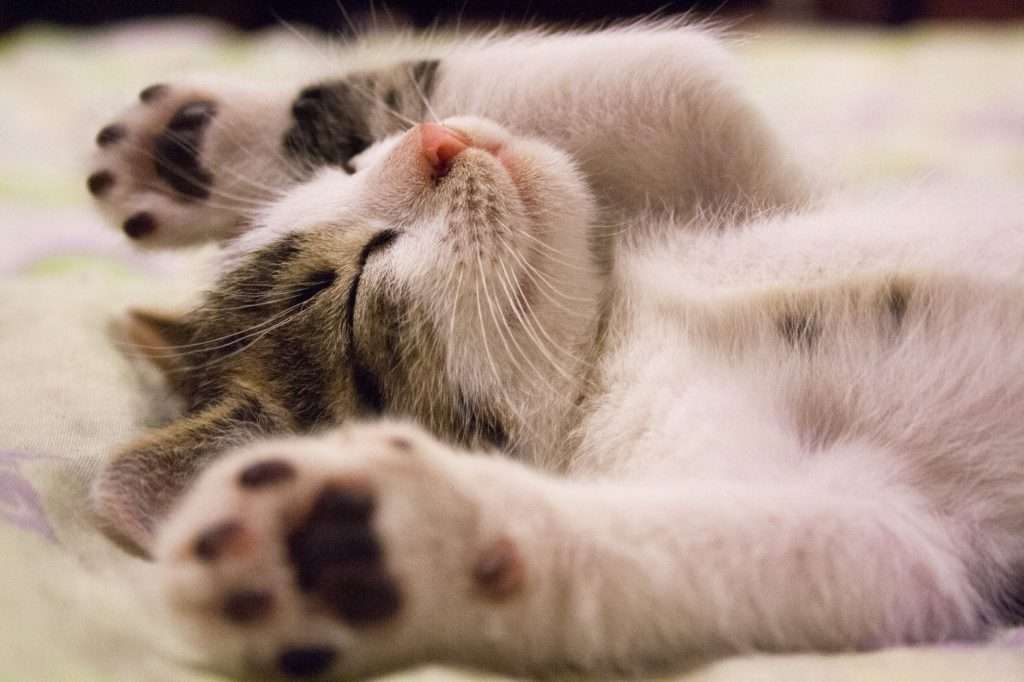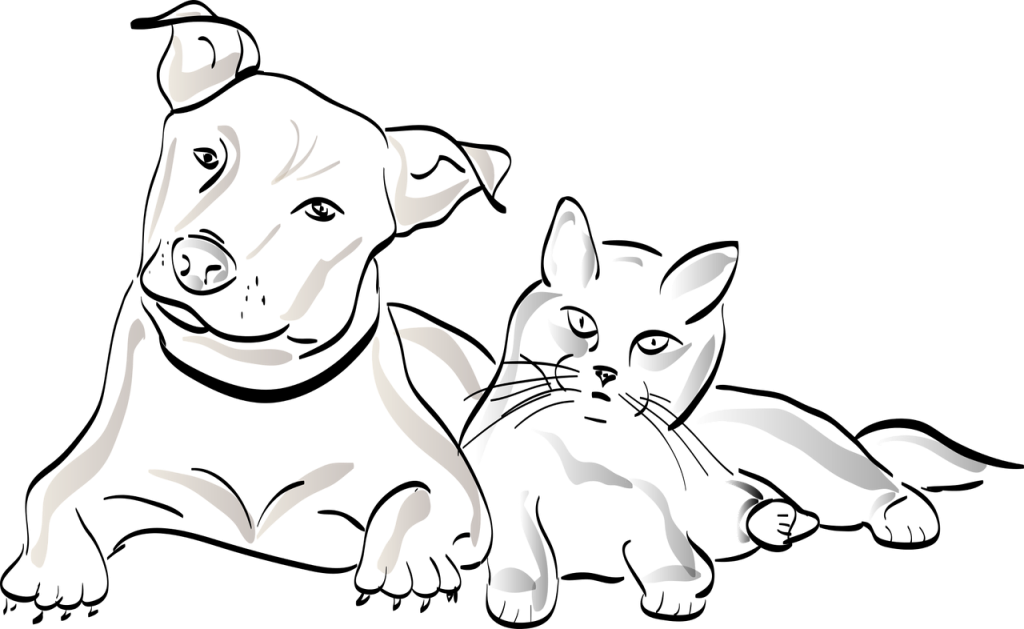1.What is Feline infectious peritonitis (FIP)?
Feline infectious peritonitis (FIP) is the name given to a common and aberrant immune response to infection with feline coronavirus (FCoV).[1]
FCoV is a virus of the gastrointestinal tract. Most infections are either asymptomatic or cause diarrhea, especially in kittens, as maternally derived antibody wanes at between 5 and 7 weeks of age. The virus is a mutation of feline enteric coronavirus (FECV). From the gut, the virus very briefly undergoes a systemic phase,[2] before returning to the gut where it is shed in the feces.
The pathogenesis of FIP is complex. There is a general consensus that FIPVs arise from mutations enabling them to enter or replicate more successfully in monocytes (a type of white blood cell). However, many aspects of virus–host interactions affecting the disease remain uncertain, such as the factors that influence disease form (wet or dry), outcome (death or resistance), and host susceptibility.[3]
2.FIP Stage (Wet, Dry, Ocular and Neurological)
There are two main forms of FIP: effusive (wet) and non-effusive (dry). While both types are fatal, the effusive form is more common (60–70% of all cases) and progresses more rapidly than the non-effusive form.
Wet FIP is characterized by the accumulation of large amounts of inflammatory fluid either in the abdominal cavity and/or chest cavity. Involvement of the central nervous system (CNS) and eyes is relatively uncommon in the wet form of FIP. Other symptoms include lack of appetite, fever, weight loss, jaundice, and diarrhea.
The dry form of FIP is characterized, not by diffuse inflammation and fluid effusion, but rather by less numerous and larger tumor-like lesions (i.e., granulomas) in organs (e. g., kidney, cecum, colon, liver, lung, lymph nodes) within the abdominal or thoracic cavities, or in the eyes and brain. Whereas the brain and/or eyes are only involved in 9% of the cases, neurological and-or ocular disease is seen as the main presenting clinical sign in 70% of cats with dry FIP.[4]
3.How to diagnose FIP cat?
3.1. Diagnosing effusive FIP
Within the veterinary hospital there are a number of tests which can rule out a diagnosis of effusive FIP within minutes:
- Measure the total protein in the effusion: if it is less than 35g/L, FIP is extremely unlikely.
- Measure the albumin to globulin ratio in the effusion: if it is over 0.8, FIP is ruled out; if it is less than 0.4, FIP is a possible—but not certain—diagnosis.[5]
- Examine the cells in the effusion: if they are predominantly lymphocytes (a type of white blood cell), then FIP is excluded as a diagnosis.
3.2. Diagnosing non-effusive FIP
Non-effusive FIP is more difficult to diagnose than effusive FIP because the clinical signs tend to be more vague and varied: the list of differential diagnoses is therefore much longer. Non-effusive FIP diagnosis should be considered when the following criteria are met:[5]
- History: the cat is young (under 2 years old) and purebred: over 70% of cases of FIP are in pedigree kittens.
- History: the cat experienced stress such as recent neutering or vaccination
- History: the cat had an opportunity to become infected with FCoV, such as originating in a breeding or rescue cattery, or the recent introduction of a purebred kitten or cat into the household.
- Clinical signs: the cat has become anorexic or is eating less than usual; has lost weight or failed to gain weight; has a fever of unknown origin; intra-ocular signs; jaundice.
- Biochemistry: hypergammaglobulinaemia; raised bilirubin without liver enzymes being raised.
- Hematology: lymphopenia; non-regenerative—usually mild—anaemia.
- Serology: the cat has a high antibody titre to FCoV: this parameter should be used with caution, because of the high prevalence of FCoV in breeding and rescue catteries.
4.How to deal with FIP?
An experimental drug called GS-441524 was used in a field experiment of 31 cats. After 25 days, five cats had died, eight had been cured and subsequently relapsed, and 18 had been cured without any subsequent relapses. The eight who relapsed were treated again, some with higher doses. Of these eight, one died and seven were cured, meaning that 25 of the 31 cats were ultimately cured of FIP. Although the drug is not yet (as of 2019) commercially available in the United States, this study is considered very promising and may lead to commercially available medication for the treatment of FIP.[6] GS-441524 is available at >99% purity commercially from FIP Doctor as injection and tablet formulation (www.fipdoctor.com).
Reference
[1] Addie, D.; Belák, S.; Boucraut-Baralon, C.; Egberink, H.; Frymus, T.; Gruffydd-Jones, T.; Hartmann, K.; Hosie, M. J.; Lloret, A.; et al. (2009-07-11). “Feline infectious peritonitis. ABCD guidelines on prevention and management”. Journal of Feline Medicine and Surgery. 11 (7): 594–604. doi:10.1016/j.jfms.2009.05.008. PMC 7129471. PMID 19481039
[2] Porter, E.; Tasker, S.; Day, M. J.; Harley, R.; Kipar, A.; Siddell, S. G.; Helps, C. R. (2014-04-25). “Amino acid changes in the spike protein of feline coronavirus correlate with systemic spread of virus from the intestine and not with feline infectious peritonitis”. Veterinary Research. BiomedCentral. 45 (1): 49. doi:10.1186/1297-9716-45-49. PMC 4006447. PMID 24767677
[3] Pedersen, N. C. (August 2014). “An update on feline infectious peritonitis: virology and immunopathogenesis”. The Veterinary Journal. 201 (2): 123–132. doi:10.1016/j.tvjl.2014.04.017. PMC 7110662. PMID 24837550.
[4]httpss://ccah.vetmed.ucdavis.edu/sites/g/files/dgvnsk4586/files/inline-files/Neurological%20FIP%20v5%281%29.pdf
[5] “Dr. Addie – What is FIP?”. www.catvirus.com.
[6] Pedersen, N. C.; Perron, M.; Bannasch, M.; Montgomery, E.; Murakami, E.; Liepnieks, M.; Liu, H. (2019-02-13). “Efficacy and safety of the nucleoside analog GS-441524 for treatment of cats with naturally occurring feline infectious peritonitis”. Journal of Feline Medicine and Surgery. 21 (4): 271–281. doi:10.1177/1098612X19825701. PMC 6435921. PMID 30755068.



